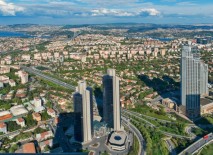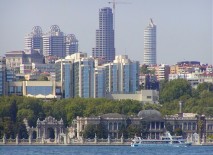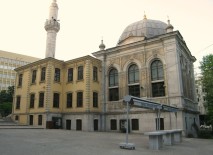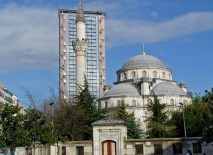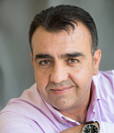Shchishli is a district of Istanbul named after a mictodistrict that is its part. Shchishli microdistrict was named after the family of fabricators who manufactured skewers ("Shchish" - in Turkish). They, in their time, built here their house, which they named Shchishchi Konay, later on it was gradually changed into Shchishlie, and then into Shchishli.
Shchishli district consists of 25 microdistricts and is situated in the European part of Istanbul. In this district there are many historical sites, modern office and shopping centers.
The history of Shchishli begins in the 16th century AD from the territory of the present Tatavla microdistrict. There is information that in the 17th century AD on both sides of the road from Taksim towards Pangalty there were cemeteries. In the 18th century AD Shchishli and Medzhidiekoy were covered with orchards and vineyards. It is also known that in 1790 Sultan Selim III laid here the construction of Teshkvie mosque.
In the 19th century, Mektebi Harbiye military school and Maçka arsenal were built here, as well as French and Armenian churches, schools and cemeteries, which means that the dense populating of the district began at that time. During the reign of Sultan Abdulmajid many migrants from the border areas of the empire were placed in the area of modern Medzhidiekyoy, where then there were fields and gardens.
In 1870, christians affected by the Big Fire in Beyoğlu were forced to move to houses built in Harbiye district. At around the same time the founder of the Ottoman Printing House, Osman Bey bought a large plot of land between Shchishli and Harbiye, where he built a mansion for himself. In the 1890s they built the first brewery Bomonti and the first children's hospital Shchishli Ephtal, which was built to the order from Sultan Abdulhamid in honor of his daughter Hatice Sultan, who died on the 8th month of her life.
In the last quarter of the 19th century in Harbiye, Nishantashi and Teshvikie districts many mansions were built. In 1881, the first ride of horse tram went from Taksim to Shchishli. In 1913 this tram line was electrified, and the tram depot was built between Medzhidiekyoy and Shchishli. Today this building accommodates Cevahir shopping mall.
In 1911, monument Abidei-Hyurriyet was opened in honor of 71 soldiers killed during the resistance to the uprising of March 31.
In the 1920s, Harbiye, Pangatly, Osmanli, Nishantashi, Teshvikie and Shchishli microdistricts changed in appearance: mansions were replaced by apartment buildings. Since the 20th of the last century and until now these areas are the most prestigious in Istanbul.
From ancient times mostly educated people have settled in this district. And today there are many schools of primary and secondary education, including French high schools of Notre Dame de Sion and Saint Michel. In addition, there are 10 higher education institutions: Istanbul Technical University, Marmara, Yildiz Teknik, Bilgi, Beykent, Bahçeşehir, Halich, Bilim, Nishantashi and Okan.
There are 2 public hospitals Shchishli Ephtal and Okmeydany, as well as 18 private hospitals.
The district has many sports clubs and its own stadium Ferikyoy.
The district is one of the centers of Istanbul's cultural life. There are many movie saloons, theaters and studios. The most prominent cultural centers are Harbiye outdoor theater, Dzhemal Reshchit Rey concert hall, Lutfi Kirdar exhibition and concert center. Also worth noting are Harbiye Muhsin Erturul scene, theaters Gyonyul-Gazenfer Ozcan, Kenter, "Harbiye Pocket Theatre", Profilo cultural center and other interesting cultural institutions.
Also, there are Military Museum and the Museum of Ataturk.
The historical multiculturalism of the district is confirmed by the fact that in addition to 33 mosques there are 1 dzhemevi, 17 churches and 2 synagogues.
Schishli district rightfully claims the title of the economic center of not only Istanbul, but Turkey as a whole. In the 1970s the area accommodated a plurality of textile companies and factories for the production of clothing. Today there are more than 4 thousand companies, most of which sew under their own brands and sell their products in more than 50 countries.
Byuyukdere street, located here, is the heart of Turkey's financial sector.
